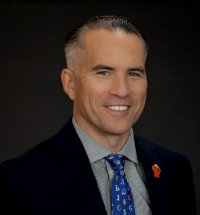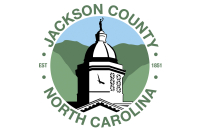The last syrup of makers
By Brent Martin • Contributing Writer
I recently met with Merritt Fouts, a multi-generational resident of Macon County, to talk about his family’s syrup making that would take place the next day. Merritt is a retired school principal and editor of the weekly e-newspaper, The Burningtown News.
Q. How many years has your family been making syrup and what can you tell us about the early history of your family syrup makings?
A. Our family has been making syrup for as long as I can remember, and they were making syrup a long time before that. They’ve been making it in Cowee for at least 110 years. Every year but a couple of years. One year my grandmother died, and one year it was too dry. They didn’t make any that year. We didn’t get the cane made.
Q. Has it always been made in the same place?
A. Well, they’ve always made it at Cowee. Use to be they made it in lots of different places. My father had a cane mill on Iotla, and my grandfather had the cane mill where it is now. There were two different mills.
Q. Were a lot more families making syrup than there are now?
A. Most every family raised cane and made syrup — it’s what we lived off of in the wintertime.
Q. What all did you use it for and what did you eat it with?
A. We ate it!
Q. You ate it right out of the jar?
A. (laughter) Sometimes we’d put syrup and butter together for biscuits. Sometimes when the cow was dry and we didn’t have any butter we’d mix hog lard with it, or bacon grease, and mix it up for butter. If the cow was dry, we wouldn’t have any butter!
Q. What were some of your earliest memories of making syrup?
A. The cane mill was about 50 feet up the hill from where it is now and down below the mill there was a culvert and there was a little shed where we boiled the syrup, and I can remember grinding cane with a mule and having to duck every time the boom pole came around. We’d grind for hours at a time, but we’d have to change the mule out of every couple of hours. Get another mule. And I remember long hours with my uncle. His name was Seaborn. He was a bachelor, but he lived with his nephew, or cousin.
But people liked to aggravate him for some reason or another. Probably because he was a bachelor and wasn’t married. And they’d slip and put soda in the boiler, and that’d make it boil over and make him kindly angry at people. It was a dirty thing to do.
Q. Would the family come from as long a distance as they do now to make syrup?
A. No, they didn’t come from far away places back then because everyone was here. People would come, different people in the community, would come from different homes that would help make it, and we would make two or three runs a day, and work till 12 o’clock at night. People from around the community came and it was a social thing. It brought people together. And they came and enjoyed syrup making and would sit around and talk until the syrup came off.
Q. What would you say the main difference is between syrup making then and syrup making now?
A. Well, I guess it’s quicker now. We still boil cane and the juice the same way. But we don’t grind it the same way. Back then we ground it with a mule and now we grind it with a tractor, but I guess it’s a little quicker the way we do it now. And now we don’t ever try to make two runs in one day. We always make one run and now people in the community don’t raise cane. We raise cane and a few people here and there raise cane.
Q. How many families would you say there are raising cane and syrup making?
A. Here in Macon County? We’re the only one.
Q. So your family is the only one left carrying on the tradition here?
A. As far as I know. Year before last, Deal Farms raised cane and one other.
Q. How did your brother Marshall become the canemaster in your family? Is there a tradition of how that person is chosen to be the one who decides when the syrup is ready?
A. Well, I guess it just happens naturally. Someone has to be the boss.
Q. So, there was never a process for deciding who the person would be?
A. No, used to be when my brother Milton was living, him and Marshall kind of supervised the syrup making. But when Milton died, Marshall became the sole supervisor and everyone looked to him for advice on what to do.
Q. How many years was Milton the syrup master?
A. He and Marshall both from about 1945 on.
Q. Who is the person now who says the syrup is ready?
A. Well, it’s kind of divided right now between George Lynch and Harvey (his nephews). But we need to get Sharon (his daughter) in there to be a supervisor too, because she’s good at it. And Lucille (his wife), let her be a supervisor. But right now, Harvey and George, and Bill Fouts, decide when it’s time to take the juice off.
Q. Are there young people in the family now who have an interest in syrup making, and how do you see the tradition going forward in the Fouts family?
A. Well, Jim Fouts, that’s Marshall’s son, he is a big instigator right now in raising cane, and he kind of pushes everybody to get into it, and I would think as long as Jim is around we’ll raise cane and make syrup.
Q. Do you expect a big turnout this year?
A. Oh yeah. We’ll have a lot of people down there tomorrow.
Q. Could you say something about the Fouts family flag and the Fouts family pledge?
A. Well, I can’t say the pledge this morning (he was recovering from a bad cold). But the Fouts flag was created one afternoon when I was picking up my grandchildren from Iotla school, and they had to wait at our house until their mother got home. So one afternoon when Caitlyn was about 8 years old, she asked if she could draw a flag and I thought that was alright, so she drew this picture and she said it was the Fouts flag. So from there we transferred it to a piece of cloth and made it the Fouts flag. So we decided we needed a pledge to it, so she and I, and Sharon, and Patsy Clinton, kindly wrote the pledge to it. Then the first year we flew the flag at the cane mill, and I made a speech. Caitlin and William were there (his grandchildren), and Caitlin explained what the flag meant and what the picture on the flag meant and about the little man laughing at the written oath and then we said the pledge to the flag. You have to hold your hand on your stomach instead of your heart when you say the pledge.
Q. So you can’t share the pledge with us this morning?
A. Well, I don’t know if it’s in this book or not. It might be. There’s a picture of the flag on page 67. Marshall made everybody memorize the pledge when they’d come down for the syrup making. Yep, here it is. Marshall liked for people who’d come around his house to get a little syrup to memorize the pledge in order to get the syrup.
The Fouts Family Pledge
I pledge allegiance to the Fouts flag and to the people for which it stands, one family with varied names, dedicated to preserving by practice the right for everyone to speak at the same time, to raise cane, and to work hard so that there will be syrup for all.
Q. So could you tell us something about how the process of making syrup begins? I know every year you all have to plant the cane and that you plant it behind Marshall’s house, and then you all have to participate in weeding the cane and taking care of the cane. Tell us how it all happens.
A. Well, we start out with Jim plowing the field. He’ll probably have the field plowed before the last of October. Then it just lays there for the winter. Then in the spring we’ll roto-vate the soil, and lay it off in rows. Then come along with a little planter and plant the seed. Then we‘ll get the family together to weed the cane and thin it out.
Q. So after you’ve harvested the cane, what’s next?
A. We haul it to Cowee, to the mill, and at the mill we grind it. Then we put it in the boiler and boil it three or four hours and set the boiler off and pour the juice off into quart jars. Then we divide it out and eat it.
Q. Can you tell us how the syrup is divided?
A. It’s divided in four ways — always four ways —Milton’s family, Marshall’s family, Doris’s family, and my family.
Q. So the four eldest members get the syrup and divide it how they want?
A. Well, I’m not one of the eldest, I’m the youngest! (laughter). The rest of my family moved away so they hardly ever participate in it. But we share with the people who are away. My brother lives in Quantico, and so we’ll send him a quart or two of syrup. His daughter is here this year. She came down yesterday from Richmond, Va., and she’ll be down there tomorrow. So we’ll share some with them. But you can’t share a whole lot because there’s not much to give away.
Q. What would you say the most important thing about the syrup making tradition is to you? Besides how good it is.
A. Well, for me, it’s getting to see everybody. And I just like being around people, so I like being there and being around everyone and just going on all the time about this and that. It’s just a good thing for people to get together — family and friends.
Q. Could you tell us a little bit about the syrup book you’re holding there?
A. My daughter Judy wanted to get this together. She thought that it would be good if we put up a kind of a cookbook, with every recipe in the book with molasses or syrup in it, and kind of a collection of stories — different stories from people in the family. Marshall, he wrote an article, and Harvey, he wrote an article. Katherine Fouts Booker wrote an article. Then there’s an article in here, Memories of Aunt Francis Bryson. Sharon interviewed her and wrote an article. It’s written from that interview.
Q. What else would you like to add?
A. I don’t know. I hope the family will keep it going. Cause it brings them together. Tomorrow we’re expecting 75 people. Course it won’t just be all family. There will be a lot of friends there. Because that’s what it does — it brings friends together and brings people together. Kind of keeps their families together. It brings people down here — family members that wouldn’t come together otherwise. They wouldn’t get together if it weren’t for the syrup making.
I hope the tradition continues, even though people don’t eat syrup like they used to. It’s a tradition and something the family likes to be involved in. Maybe the young people will carry it on.
(Brent Martin lives in the Cowee Community and is the author of Poems from Snow Hill Road, New Native Press, 2007).





